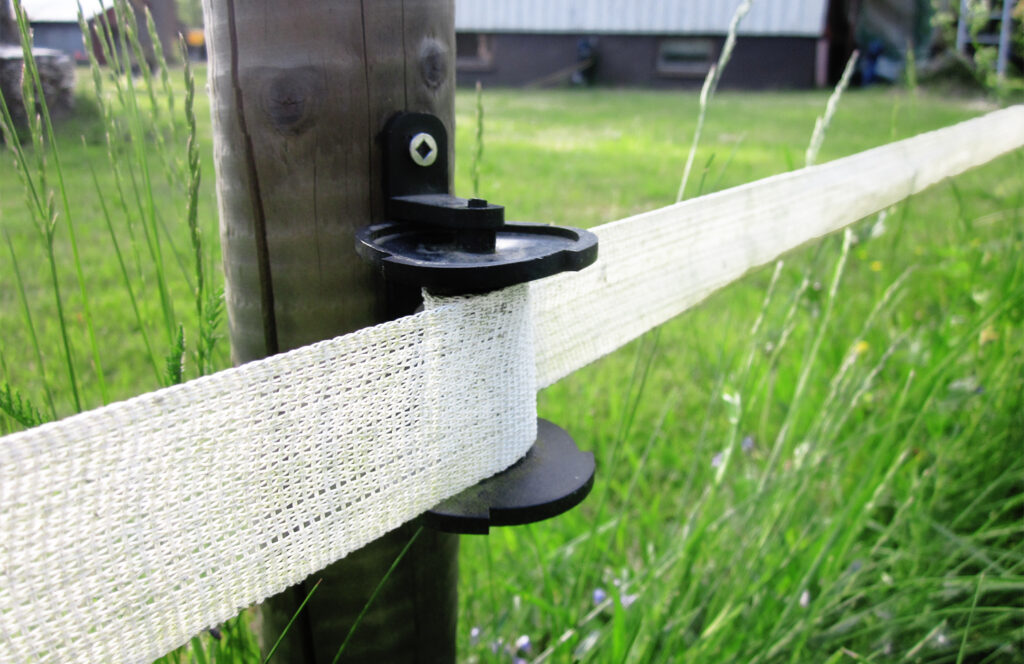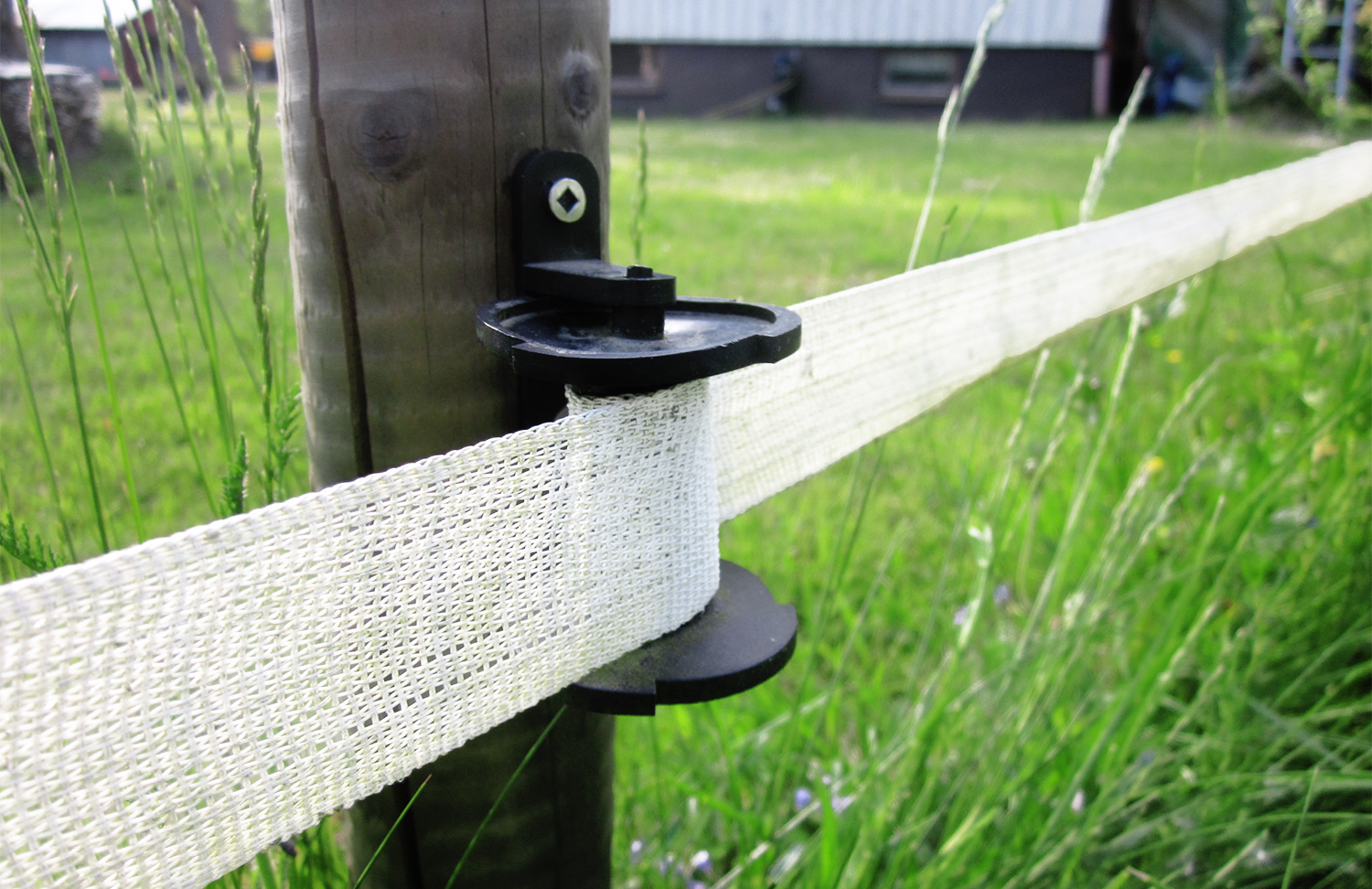
Maintaining Optimal Tension: A Comprehensive Guide to Electric Fence Tape Tensioners
Electric fences are a common sight in agricultural settings, providing a safe and effective way to contain livestock and deter predators. While the energizer gets most of the attention, the hardware that holds the fence together is equally important. Among these components, the electric fence tape tensioner plays a crucial role in maintaining the effectiveness of the fence. This comprehensive guide will delve into the intricacies of electric fence tape tensioners, covering their purpose, types, installation, maintenance, and troubleshooting.
Why Tension Matters in Electric Fences
The effectiveness of an electric fence hinges on several factors, including voltage, grounding, and, most importantly, tension. Proper tension ensures the tape remains taut, preventing sagging that can lead to animals pushing through or grounding out the current. Sagging tape can also become tangled in vegetation, further reducing the fence’s effectiveness and potentially damaging the tape itself. A well-tensioned fence also presents a more visible deterrent, discouraging animals from even testing its boundaries.
Understanding Electric Fence Tape Tensioners
An electric fence tape tensioner is a device designed to apply and maintain the correct amount of tension on the electric fence tape. It prevents the tape from sagging, ensures consistent conductivity, and extends the lifespan of the tape. These tensioners are typically made from durable materials like galvanized steel or high-impact plastics to withstand the rigors of outdoor use and varying weather conditions.
Types of Electric Fence Tape Tensioners
Several types of electric fence tape tensioners are available, each with its own advantages and disadvantages. Choosing the right type depends on the length of your fence, the type of tape used, and your personal preferences.
Ratchet Tensioners
Ratchet tensioners are arguably the most common type. They feature a ratchet mechanism that allows you to incrementally increase the tension on the tape. This precise control is particularly useful for long fences where consistent tension is paramount. Ratchet tensioners are generally robust and easy to use, making them a popular choice for both novice and experienced fence builders.
Spring Tensioners
Spring tensioners utilize a spring to maintain constant tension on the tape. They automatically adjust to temperature changes and minor impacts, ensuring the fence remains taut without manual adjustments. Spring tensioners are ideal for areas with fluctuating temperatures, as they prevent the tape from becoming too slack in cold weather or overly tight in hot weather. However, they may not be suitable for very long fences where more precise tension control is needed.
In-Line Tensioners
In-line tensioners are installed directly within the fence line. They are typically used for shorter fences or sections of fences where a small amount of tension adjustment is required. They are compact and easy to install, making them a convenient option for quick repairs or minor adjustments.
Corner Tensioners
Corner tensioners are specifically designed for use at corners or ends of fences. They provide extra support and tension to prevent the tape from sagging or pulling away from the posts. These tensioners are often more robust than other types to withstand the increased stress at these critical points.
Installing Electric Fence Tape Tensioners
Proper installation is crucial for the effectiveness of electric fence tape tensioners. Follow these steps for a secure and reliable installation:
- Choose the Right Location: Select a sturdy post or anchor point for the tensioner. Corner posts are ideal for ratchet and spring tensioners, while in-line tensioners can be placed anywhere along the fence line.
- Attach the Tensioner: Securely attach the tensioner to the post using screws, bolts, or other appropriate fasteners. Ensure the tensioner is aligned correctly to allow the tape to run smoothly through it.
- Thread the Tape: Thread the electric fence tape through the tensioner according to the manufacturer’s instructions. Most tensioners have a specific mechanism for gripping the tape and preventing it from slipping.
- Apply Tension: Use the ratchet mechanism or adjust the spring tension to achieve the desired tension on the tape. Avoid over-tensioning, as this can damage the tape and put excessive stress on the posts.
- Secure the Tape: Once the desired tension is achieved, secure the tape to the tensioner according to the manufacturer’s instructions. This may involve tightening a clamp, locking the ratchet mechanism, or using a specialized fastener.
Maintaining Your Electric Fence Tape Tensioners
Regular maintenance is essential for ensuring the longevity and effectiveness of your electric fence tape tensioners. Here are some key maintenance tasks:
- Inspect Regularly: Inspect the tensioners regularly for signs of wear, damage, or corrosion. Replace any damaged or worn-out tensioners immediately.
- Clean the Tensioners: Clean the tensioners periodically to remove dirt, debris, and corrosion. Use a wire brush or sandpaper to remove stubborn deposits.
- Lubricate Moving Parts: Lubricate the moving parts of ratchet and spring tensioners with a silicone-based lubricant. This will help to prevent corrosion and ensure smooth operation.
- Check Tension: Regularly check the tension of the tape and adjust as needed. Temperature changes, impacts, and stretching can all affect the tension over time.
Troubleshooting Common Issues
Even with proper installation and maintenance, you may encounter some issues with your electric fence tape tensioners. Here are some common problems and their solutions:
- Tape Slipping: If the tape is slipping through the tensioner, check the gripping mechanism for wear or damage. Replace any worn or damaged parts. Also, ensure the tape is properly threaded through the tensioner.
- Tensioner Not Holding Tension: If the tensioner is not holding tension, check the ratchet mechanism or spring for damage. Replace any damaged parts. Also, ensure the tensioner is securely attached to the post.
- Corrosion: Corrosion can weaken the tensioner and affect its performance. Clean the tensioner regularly and apply a corrosion-resistant coating. Replace severely corroded tensioners.
- Tape Breaking: Over-tensioning can cause the tape to break. Reduce the tension to the recommended level. Also, inspect the tape for signs of wear or damage and replace it if necessary. [See also: Choosing the Right Electric Fence Tape]
Choosing the Right Electric Fence Tape
The type of electric fence tape you use can significantly impact the performance of your tensioners. Consider the following factors when choosing your tape:
- Width: Wider tape is generally more visible and durable.
- Material: Polyethylene tape is a common and cost-effective option, while high-tensile tape offers superior strength and durability.
- Conductivity: The conductivity of the tape determines how effectively it carries the electric current. Choose a tape with high conductivity for optimal performance.
- UV Resistance: UV resistance is crucial for preventing the tape from degrading in sunlight. Choose a tape with good UV resistance for long-lasting performance.
Safety Considerations
Working with electric fences can be dangerous. Always follow these safety precautions:
- Turn Off the Energizer: Always turn off the energizer before working on the fence.
- Wear Gloves: Wear insulated gloves to protect yourself from electric shock.
- Use Insulated Tools: Use insulated tools to prevent short circuits.
- Keep Children Away: Keep children and pets away from the fence while you are working on it.
Investing in Quality Electric Fence Tape Tensioners
While it might be tempting to cut corners and opt for cheaper electric fence tape tensioners, investing in quality components is a wise decision in the long run. High-quality tensioners are more durable, reliable, and easier to use. They also contribute to the overall effectiveness and longevity of your electric fence. Look for tensioners made from durable materials, with robust mechanisms, and positive customer reviews.
The Future of Electric Fence Technology
The technology behind electric fences is constantly evolving. We can expect to see further advancements in electric fence tape tensioners, including smart tensioners that automatically adjust to changing conditions and provide real-time data on fence performance. These advancements will further enhance the effectiveness and convenience of electric fences, making them an even more valuable tool for livestock management and predator control. [See also: Smart Electric Fence Systems]
Conclusion
Electric fence tape tensioners are an essential component of any electric fence system. By understanding their purpose, types, installation, maintenance, and troubleshooting, you can ensure your fence remains effective and reliable for years to come. Remember to choose the right tensioners for your specific needs, install them correctly, and maintain them regularly. With proper care, your electric fence tape tensioners will help you keep your livestock safe and secure.

